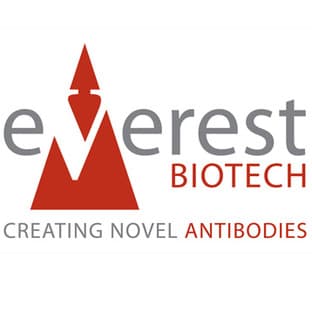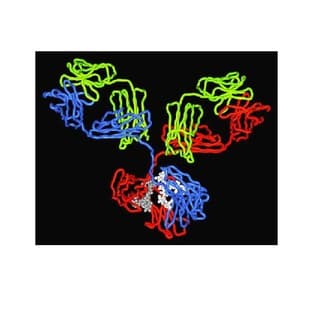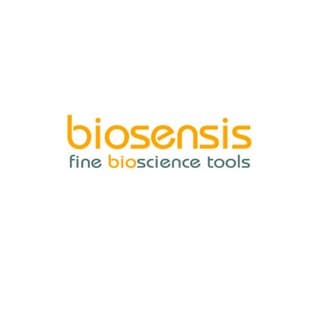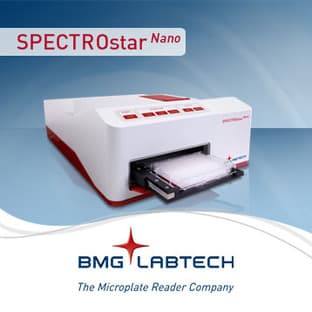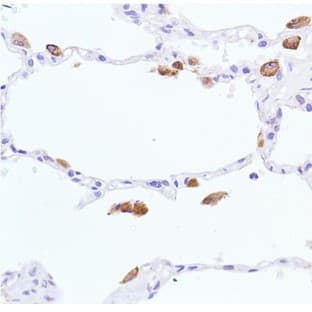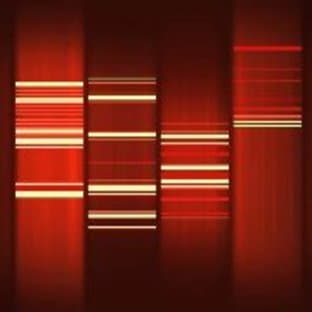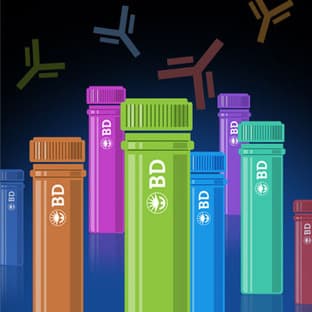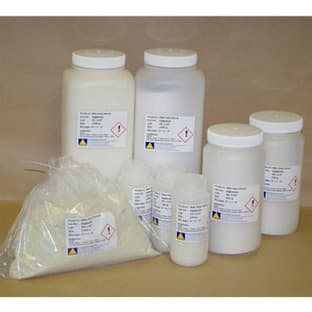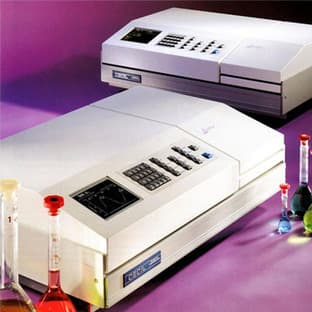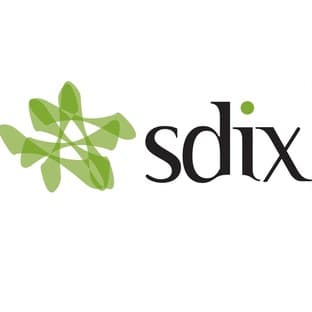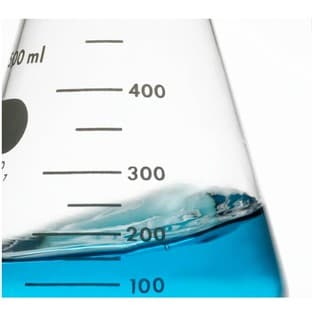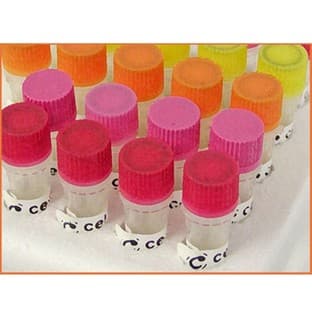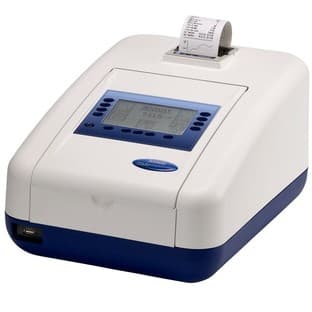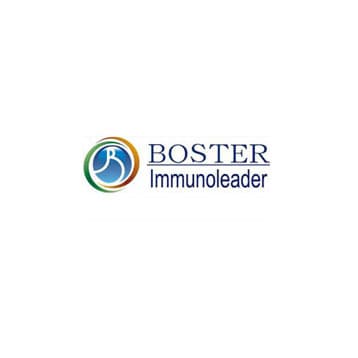
Supplier:
BOSTER IMMUNOLEADERCat no: PA1896
Polyclonal Anti-SDC2
Prices direct from BOSTER IMMUNOLEADER
Quick response times
Exclusive Biosave savings/discounts
SPECIFICATIONS
Price
200.00 USD
Catalog Number
PA1896
Size
100ug/vial
Applications
IHC, WB
Reactivities
Hum
Form
Lyophilized
Format
Each vial contains 5mg BSA, 0.9mg NaCl, 0.2mg Na2HPO4, 0.05mg Thimerosal, 0.05mg NaN3.
Gene Id
SDC2
References
1. Bobardt, M. D., Saphire, A. C. S., Hung, H.-C., Yu, X., Van der Schueren, B., Zhang, Z., David, G., Gallay, P. A.Syndecan captures, protects, and transmits HIV to T lymphocytes.Immunity 18: 27-39, 2003.\n2. David, G., van der Schueren, B., Marynen, P., Cassiman, J.-J., van den Berghe, H.Molecular cloning of amphiglycan, a novel integral membrane heparan sulfate proteoglycan expressed by epithelial and fibroblastic cells.J. Cell Biol. 118: 961-969, 1992.\n3. Marynen, P., Zhang, J., Cassiman, J.-J., Van den Berghe, H., David, G.Partial primary structure of the 48- and 90-kilodalton core proteins of cell surface-associated heparan sulfate proteoglycans of lung fibroblasts: prediction of an integral membrane domain and evidence for multiple distinct core proteins at the cell surface of human lung fibroblasts.J. Biol. Chem. 264: 7017-7024, 1989.\n
Swiss Prot
P34741
Storage Temp
At -20 degree C for one year. After reconstitution, at 4 degree C for one month. It can also be aliquotted and stored frozen at -20 degree C for a longer time.Avoid repeated freezing and thawing.
Additional Info
A synthetic peptide corresponding to a sequence in the middle region of human SDC2.
Scientific Background
SDC2 (Syndecan-2) also known as SYND2, HSPG1, HSPG, and Fibroglycan, is a protein that in humans is encoded by the SDC2 gene. The protein encoded by this gene is a transmembrane (type I) heparan sulfate proteoglycan and is a member of the syndecan proteoglycan family. By Southern hybridization to a panel of human-mouse somatic cell hybrid DNA and by in situ hybridization, Marynen et al. (1989) showed that the heparan sulfate proteoglycan core protein maps to 8q22-q24. (Heparan sulfate proteoglycan of basement membrane appears to be encoded by a gene on human chromosome 1.Bobardt et al. (2003) demonstrated that syndecans, including SDC2, can function as in trans HIV receptors via binding of HIV-1 gp120 to the syndecan heparan sulfate chains. Flow cytometric analysis demonstrated SDC expression on endothelial cells. HIV bound to SDC on endothelial cell lines maintained its infectivity for at least 1 week, compared with less than 1 day for unbound virus. Bobardt et al. (2003) suggested that SDC-rich endothelial cells lining the vasculature can provide a microenvironment that boosts HIV replication in T cells.
More from BOSTER IMMUNOLEADER
Applications
IHC, WB
Reactivities
Hum
Applications
IHC, WB
Reactivities
Mouse, Rat
Applications
ELISA, WB
Reactivities
Mouse
Applications
WB
Reactivities
Hum, Mouse, Rat
Applications
IHC, WB
Reactivities
Hum
Latest promotions
Spend less time on DNA cleanup so you can do more science. The MSB Spin PCRapace is the fastest way to purify your DNA from PCR, restriction digestion, and...
New brilliant antibodies, and new lower prices!For flow cytometry reagents in general, \"bright is better.\" The violet-excitable BD Horizon™ BV421 and...
As an incentive to qualify our BSA, we are offering a 20% discount when you purchase your first 100g, 500g or 1000g of any grade of Bovine Serum Albumin....
It is not every day that you are given something for nothing. We are giving away additional spectrophotometer software.Cecil Instruments have enhanced the...
We're so sure that you'll prefer Cayman Assay kits over your present brand that we're willing to give you a free assay kit to prove it!
10% Discount on 2 Rabbit Polyclonal Antibody Service. With over 20 years experience, SDIX has developed into the premier US custom antibody producer,...
For the past decade scientists have extensively used ATS secondary toxin conjugates to make their own targeted toxins for in vitro use.The ability to combine...
Did your supplier increase the price of Fetal Bovine Serum? Did they substitute the US Origin with USDA? Well say no more! Innovative Research is still...
Bulk Cytokines with Custom Vialing.20 - 50% off cytokines, growth factors, chemokines and more...For a limited time Cell Sciences is offering substantial...
Jenway’s 73 series spectrophotometer range provides four models with a narrow spectral bandwidth of 5nm and an absorbance range of –0.3 to 2.5A,...
Are you planning to have a customised antibody made for your research?Since 2000, Everest has been producing a catalog containing thousands of affinity...
Top suppliers
United States Biological
230753 products
Carl Zeiss Microscopy
27 products
Promega Corporation
11 products
Panasonic Healthcare Company
5 products
Life Technologies
1 products
Nikon Instruments Europe
11 products
Olympus Europa Holding GmbH
3 products
Leica Microsystems, Inc.
10 products
GE Healthcare Life Sciences
2 products
Tecan Trading AG
19 products
Beckman Coulter, Inc.
1 products
AB SCIEX
3 products
BD (Becton, Dickinson and Company)
1 products
RANDOX TOXICOLOGY
5 products
Randox Food Diagnostics
6 products


